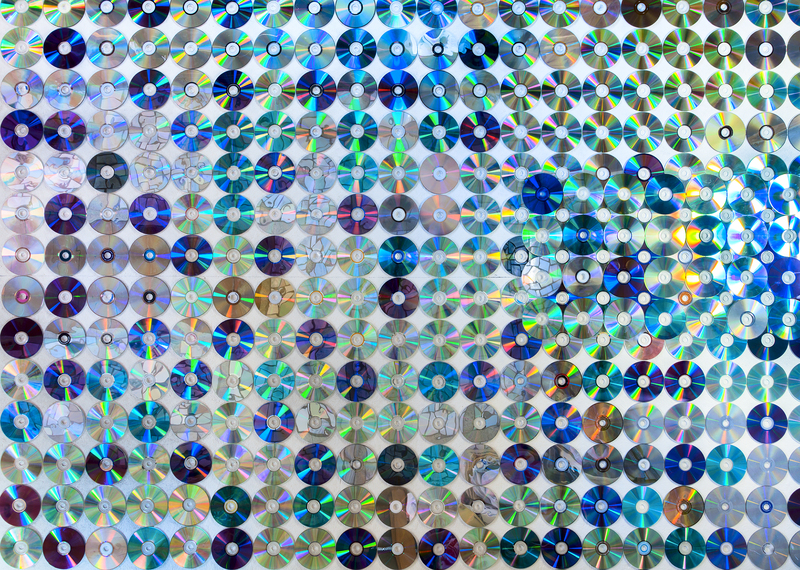Glass Recycling Overview and Tips
Posted on 19/02/2025
Glass recycling is a crucial aspect of sustainable waste management. It helps conserve natural resources, reduce greenhouse gas emissions, and limit the amount of waste that ends up in landfills. This article provides an in-depth look at glass recycling, its benefits, the recycling process, and practical tips for households and businesses to effectively recycle glass.
What is Glass Recycling?
Glass recycling involves collecting used or discarded glass materials, processing them, and turning them into new glass products. Unlike some other materials, glass can be recycled indefinitely without losing its purity or quality. This makes glass an incredibly sustainable material when properly managed.

Benefits of Glass Recycling
Recycling glass offers numerous environmental, economic, and energy-saving benefits:
- Conserves Natural Resources: Recycling glass reduces the need for raw materials like sand, soda ash, and limestone.
- Energy Savings: Manufacturing glass from recycled materials requires significantly less energy compared to producing new glass from raw materials. It is estimated that recycled glass uses 30% less energy.
- Reduces Landfill Waste: Glass takes an extremely long time to decompose. Recycling helps reduce the volume of glass waste in landfills.
- Decreases Pollution: Recycling reduces air and water pollution by decreasing the need for raw material extraction and processing.
- Economic Growth: The recycling industry generates jobs and supports the economy by creating demand for recycled materials.
The Glass Recycling Process
Glass recycling follows a systematic process to ensure that the collected materials are effectively transformed into new products. Here are the steps involved:
1. Collection
Collection is the first step where used glass is gathered from various sources, such as households, businesses, and recycling centers. Proper sorting is crucial at this stage to separate glass by color and type (e.g., container glass, flat glass).
2. Sorting and Cleaning
Once collected, glass is sorted by color (clear, green, brown) and type. Sorting is essential because mixing different colors can affect the quality of the recycled glass. The sorted glass is then cleaned to remove impurities like labels, caps, and food residues.
3. Crushing
The clean glass is fed into a crusher, where it is broken down into small pieces called cullet. Cullet is the primary raw material used in the manufacture of new glass products.
4. Melting
The cullet is melted in a furnace at high temperatures, typically around 1700 degrees Celsius. Because recycled glass melts at a lower temperature than raw materials, this step saves energy.
5. Forming New Products
The molten glass is molded into new products including bottles, jars, and other glass containers. It can also be used in construction materials such as fiberglass insulation and glassphalt.
Tips for Effective Glass Recycling
To ensure your glass recycling efforts are effective, follow these practical tips:
1. Know What Can Be Recycled
Not all glass is recyclable. Familiarize yourself with the types of glass that can be recycled in your area. Commonly accepted items include beverage bottles, food jars, and cosmetic bottles. Items such as window glass, ceramics, light bulbs, and glass cookware typically cannot be recycled with container glass.
2. Rinse Before Recycling
Clean your glass containers before recycling them. Rinsing removes food residue and other contaminants that can interfere with the recycling process. However, you do not need to remove labels as they are burned off during the recycling process.
3. Separate by Color
If your local recycling program requires it, separate your glass by color. This helps maintain the quality of the recycled glass and ensures the new products manufactured match the desired color specifications.
4. Avoid Breaking the Glass
Recyclable glass should remain intact whenever possible. Broken glass can be hazardous to sanitation workers and can contaminate other recyclable materials. If you must dispose of broken glass, check with your recycling provider for the proper disposal method.
5. Support Products Made from Recycled Glass
Promote the glass recycling industry by purchasing products made from recycled glass. This creates demand and encourages more glass recycling.
Challenges in Glass Recycling
While glass recycling has many benefits, it also faces several challenges:
1. Contamination
Contamination from food residues, labels, and caps can hinder the recycling process and reduce the quality of recycled glass products. Ensuring that glass is properly cleaned and sorted can mitigate this issue.
2. Collection and Transportation
Collecting and transporting glass to recycling facilities can be costly and logistically challenging, especially in rural areas. Efficient collection systems and collaboration between municipalities, businesses, and recycling companies are essential.
3. Market Demand
The demand for recycled glass fluctuates based on market conditions. At times, the cost of recycling glass can outweigh the benefits, leading to stockpiles of unused cullet. Developing stable and diversified markets for recycled glass products can address this challenge.

The Future of Glass Recycling
The future of glass recycling looks promising as advancements in technology and increasing environmental awareness drive improvements in recycling processes and infrastructure.
1. Technological Innovations
Innovative technologies are being developed to enhance the efficiency of glass recycling. For example, optical sorting machines can more accurately separate glass by color and remove impurities, improving the quality of recycled glass.
2. Legislative Support
Governments worldwide are implementing policies and regulations to encourage recycling and reduce waste. Extended producer responsibility (EPR) programs, which hold manufacturers accountable for the lifecycle of their products, are gaining traction and promoting recycling initiatives.
3. Global Collaboration
International cooperation among governments, businesses, and environmental organizations is crucial to addressing the global challenge of waste management. Sharing best practices, technologies, and resources can enhance glass recycling efforts worldwide.
Conclusion
Glass recycling is an essential practice for protecting the environment, conserving resources, and promoting sustainable development. By understanding the recycling process, adhering to best practices, and supporting efforts to improve recycling infrastructure, we can make significant strides in reducing waste and fostering a more sustainable future.
Whether you are an individual looking to improve your household recycling habits or a business aiming to adopt more sustainable practices, the tips and insights provided in this article can help you contribute to the global effort of glass recycling. With collective effort, we can ensure that glass continues to be a shining example of a sustainable material with endless possibilities.



